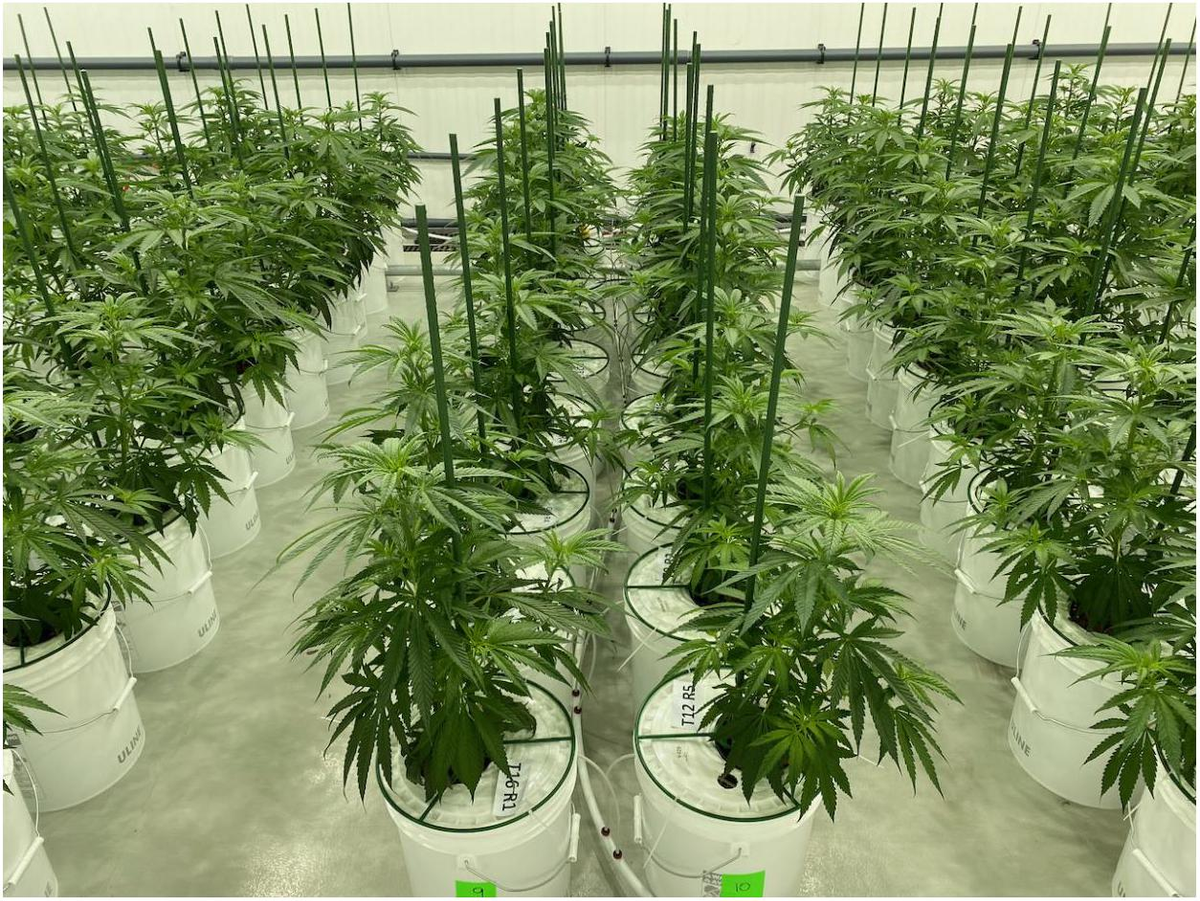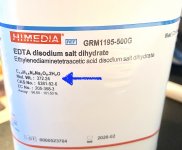ExNavyInSTL
Active member
I would like someone who makes their own fertilizer to check my math.
I've learned Hydro Buddy and I have created my "ideal" nutrient recipe (in theory).
However, I want to make sure I understand the formula for adding Disodium EDTA to chelate my Fe, Mn, Zn & Cu.
From what I have extrapolated from Dr. Daniel Fernandez's various comments at the bottom of his DIY Nutrient videos on YouTube, it goes something like this.
1) After Final Recipe has been chosen and concentrated (i.e. 1 Liter @ 200:1),
you take the millimolar concentration amount and change 'ppm' to mM' on "Main Page."


After Switching to 'mM," it looks like this:

2) Once you have the millimolar concentration (numbers above in yellow boxes), you add up the 4 numbers:
Fe: 4.298E-02
Mn: 9.101E-03
Zn: 3.363E-03
Cu: 4.721E-03
-------------------
= 6.02E-02 (0.0602)
Actually, it is: 0.060165
3) Once you establish this number:
Multiply by the concentration Amount (200:1). It would be multiplied by 100 if 100:1.
0.060165 x 200
= 12.033
4) Next he likes to add 20 or 25% for safety.
12.033 x 1.25
=15.041
5) Now you take your "safe" total and multiply by the molar mass of Disodium EDTA (336.21) for your grams:
15.0412 x 0.33621
That leaves you with the grams required.
However, the number isn't necessarily complete.
In this case, it is, but if the amount was 0.5 liter it would be different.
For the Final Number, Multiply grams by the volume of concentration (1 Liter):
5.06 x 1.00
= 5.06 grams
If it were for 0.5 liters, then it would be :
5.06 x 0.5
=2.53 grams
Have I interpreted the formula correctly?
I've learned Hydro Buddy and I have created my "ideal" nutrient recipe (in theory).
However, I want to make sure I understand the formula for adding Disodium EDTA to chelate my Fe, Mn, Zn & Cu.
From what I have extrapolated from Dr. Daniel Fernandez's various comments at the bottom of his DIY Nutrient videos on YouTube, it goes something like this.
1) After Final Recipe has been chosen and concentrated (i.e. 1 Liter @ 200:1),
you take the millimolar concentration amount and change 'ppm' to mM' on "Main Page."
After Switching to 'mM," it looks like this:
2) Once you have the millimolar concentration (numbers above in yellow boxes), you add up the 4 numbers:
Fe: 4.298E-02
Mn: 9.101E-03
Zn: 3.363E-03
Cu: 4.721E-03
-------------------
= 6.02E-02 (0.0602)
Actually, it is: 0.060165
3) Once you establish this number:
Multiply by the concentration Amount (200:1). It would be multiplied by 100 if 100:1.
0.060165 x 200
= 12.033
4) Next he likes to add 20 or 25% for safety.
12.033 x 1.25
=15.041
5) Now you take your "safe" total and multiply by the molar mass of Disodium EDTA (336.21) for your grams:
15.0412 x 0.33621
That leaves you with the grams required.
However, the number isn't necessarily complete.
In this case, it is, but if the amount was 0.5 liter it would be different.
For the Final Number, Multiply grams by the volume of concentration (1 Liter):
5.06 x 1.00
= 5.06 grams
If it were for 0.5 liters, then it would be :
5.06 x 0.5
=2.53 grams
Have I interpreted the formula correctly?




